The Hisense U8Q is a television that makes it hard not to feel that the manufacturer approached the topic with the ambition of a top student. The picture is strong, vibrant, and contrasty – as if shouting: "look, I can do more than most at this price!" And indeed, there’s something to that. The secret lies in the large number of dimming zones in Mini-LED technology. Thanks to them, HDR doesn’t end with the promises from the brochure but can truly impress – especially during evening screenings. It’s also hard to complain about motion fluidity. Watching matches and fast-paced games is enjoyable, and while the ball might occasionally leave a slight trace, for 99% of viewers, it will be a detail of no consequence in everyday watching. Gamers also have reasons to be satisfied here – although it’s worth immediately mentioning the lack of HGiG support. Other than that, it’s really good: low input lag, three HDMI 2.1 ports, and a full suite of gaming features make the U8Q one of the more interesting Mini-LEDs for console fans. Of course, there are no perfect products. The television still carries some “mini-led” characteristics, and the Vidaa system – while feature-rich – can be less intuitive and has a more modest selection of applications than competing platforms. But are these serious flaws or rather minor quibbles in the context of the price and what we actually get? We leave that question for you to answer!
- Matching (Score)
- Our verdict
- TV appearance
- Where to buy
- Contrast and black detail
- HDR effect quality
- Factory color reproduction
- Color reproduction after calibration
- Smoothness of tonal transitions
- Image scaling and smoothness of tonal transitions
- Blur and motion smoothness
- Console compatibility and gaming features
- Input lag
- Compatibility with PC
- Viewing angles
- TV efficiency during daytime
- Details about the matrix
- TV features
- Apps
- Playing files from USB
- Sound
Hisense U8Q vs Philips OLED820
Direct compare
U8Q
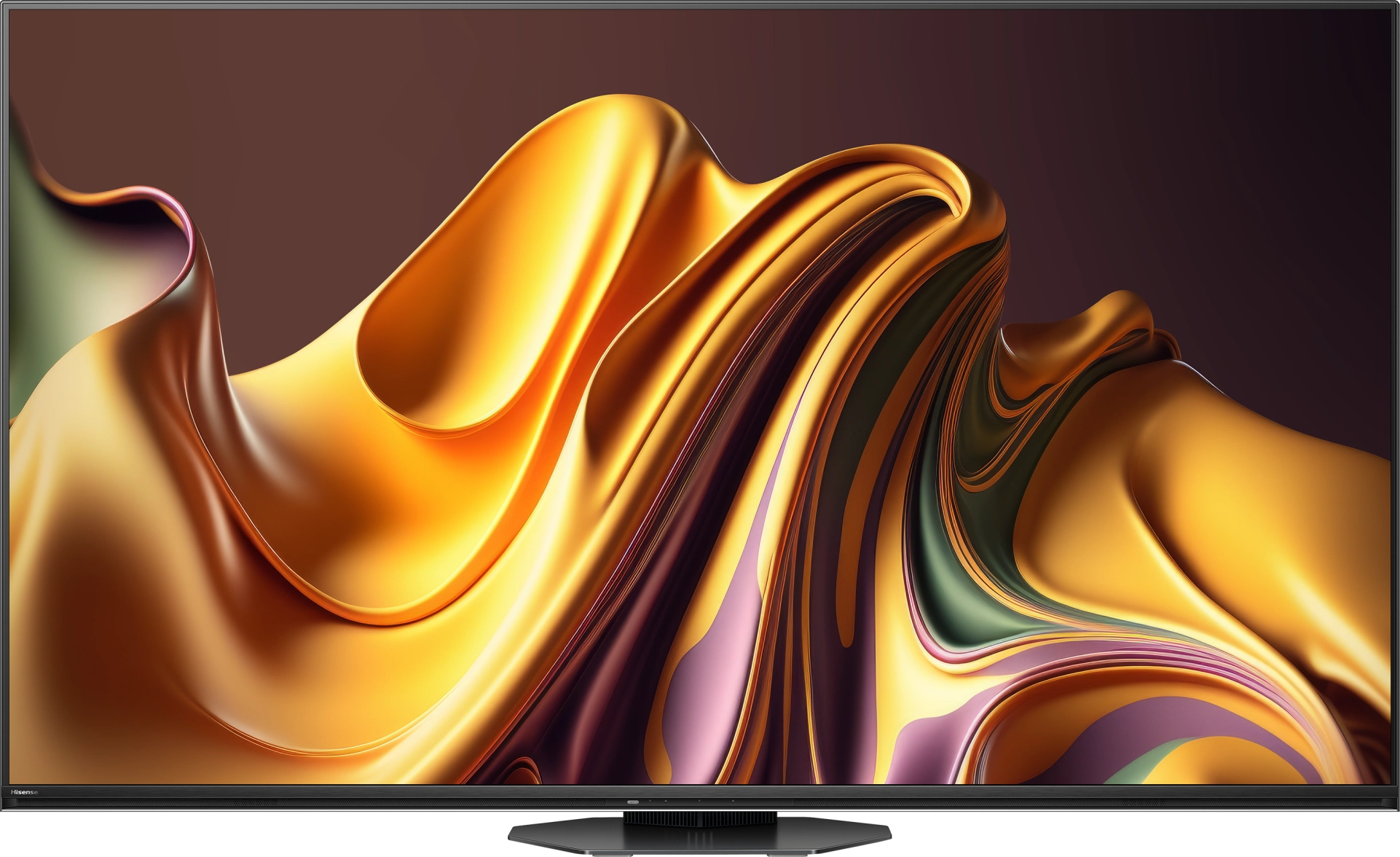

Panel type: LCD VA
Resolution: 3840x2160
System: VIDAA
Model year: 2025
Complete the survey to find out the result

Panel type: WRGB OLED
Resolution: 3810x2160
System: Google TV
Model year: 2025
Complete the survey to find out the result

Overall rating
8.0
8.0
Movies and series in UHD quality
7.8
8.3
Classic TV, YouTube
7.6
8.6
Sports broadcasts (TV and apps)
7.2
8.5
Gaming on console
8.6
9.4
TV as a computer monitor
8.4
6.5
Watching in bright light
8.2
5.7
Utility functions
9.4
6.8
Apps
7.7
9.6
Sound quality
7.8
7.7
Complete the survey to find out what fits your preferences
Advantages
Great black and contrast
Amazingly high brightness
Full HDR format package: HDR10, HDR10+, Dolby Vision
Good motion fluidity - 165Hz panel
Outstanding usability in difficult lighting conditions (High brightness + New anti-reflective coating on the panel)
Many features for gamers, VRR, ALLM, HDMI 2.1, 288Hz for PC
All 3 ports in HDMI 2.1 standard (Finally!)
USB-C with video signal transmission capability (Displayport)
Many features in the Vidaa system
Support for DTS and Dolby Atmos
Ideal contrast and black thanks to the WOLED panel
High HDR brightness (up to 1300 nits) and wide coverage of the DCI-P3 color palette (99%)
Support for multiple HDR formats including Dolby Vision and HDR10+
Great motion fluidity, no motion blur, refresh rate up to 144 Hz
Full support for gamers: HDMI 2.1 (2 ports), VRR, ALLM, HGiG, Dolby Vision in games, low input lag
Ambilight, which realistically affects image perception and distinguishes the TV from the competition
GoogleTV system with a huge app base and great voice assistant
Extras in the form of: Backlit remote and rotating stand
Support for Dolby Atmos and DTS:X audio formats
Disadvantages
Missing some applications in the Vidaa operating system
At maximum volume, the television shakes slightly
The television tends to "burn out" the picture in 4K HDR materials.
Only two HDMI 2.1 ports (with 2 consoles and a soundbar, we are forced to "juggle" the cables)
Lack of many classic "TV" features, e.g., USB recording or PiP mode, the infrared remote can be annoying
Slight issues with color matching (much better than last year but far from the competition)
Font readability issues when working with PC (lack of full Chroma 4:4:4 support)
Our verdict
The Philips OLED820 is a very successful and significant step forward compared to last year's model, the OLED 819. For many people, the main reason for purchasing it will, of course, be Ambilight: the multi-colored lighting system that sets Philips TVs apart from the competition. It’s no surprise, as it made a huge impression on us as well. It's not just an impressive gadget, but a real addition that can change the perception of the content being watched and add depth to it. However, Ambilight should not overshadow what the OLED820 offers as a screen. Here we have almost infinite contrast, high brightness in HDR films, and excellent color reproduction, which improves even more after slight tweaking or professional calibration. This setup guarantees one of the best pictures available on the market today, and we are also aware that the TV offers something unique and unprecedented elsewhere. It is also equipment that works well for gaming. A 144 Hz panel and HDMI 2.1 ports open up access to the full capabilities of new-generation consoles, and low input lag makes gameplay exceptionally responsive. The operating system also deserves praise – Google TV. This is a much better solution than the proprietary Titan OS found in lower-end Philips models, such as the OLED770. And this is a serious argument for paying extra for this model. A larger app library, a more efficient voice assistant, and fewer system errors contribute to a noticeably better everyday experience. Of course, the Philips OLED 820 is not free from minor shortcomings – some software issues are apparent, and certain features could be better refined. Nevertheless, the overall presentation is very solid. Perhaps the OLED820 is not a revolutionary TV, but it is a very successful and well-balanced option in Philips’ lineup. It combines excellent picture quality, a complete set of features for gamers, and a unique addition in the form of Ambilight. If you’re looking for a solid mid-range OLED that not only offers good picture quality but also something distinctive and exceptional, the OLED820 should be high on your shopping list.
TV appearance
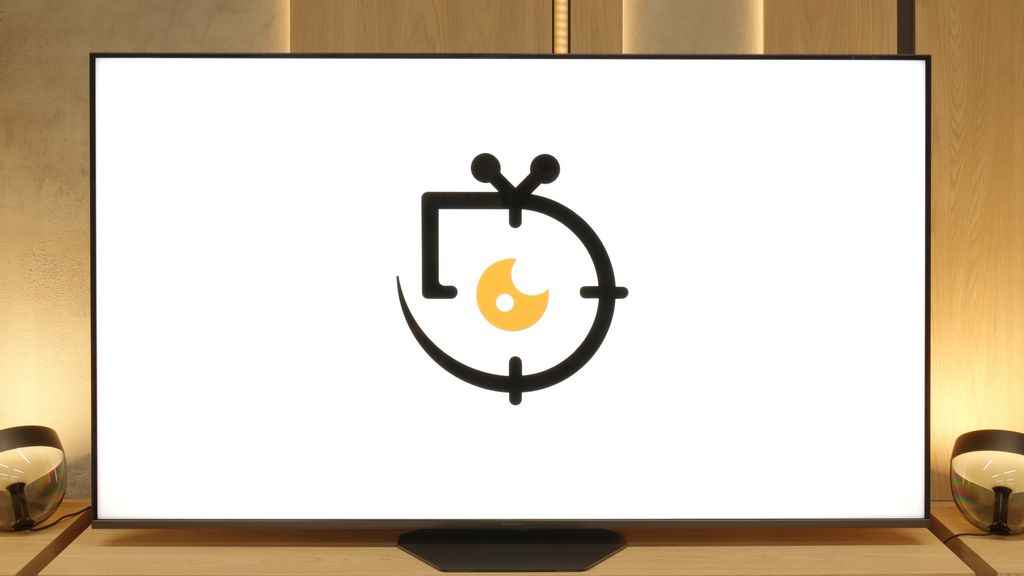
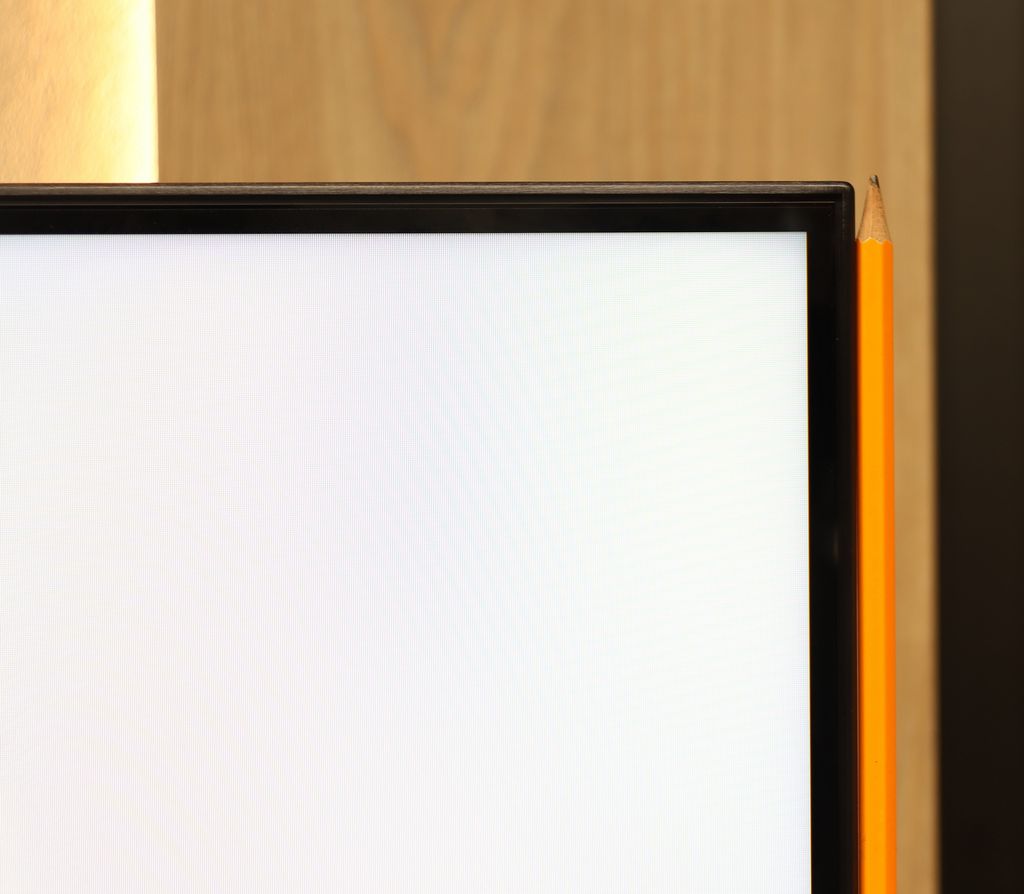
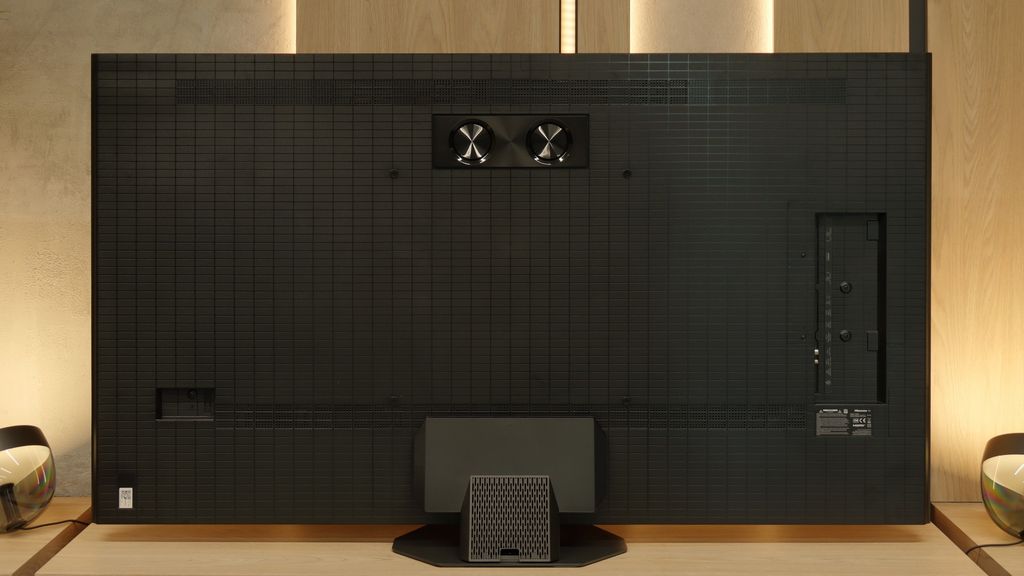
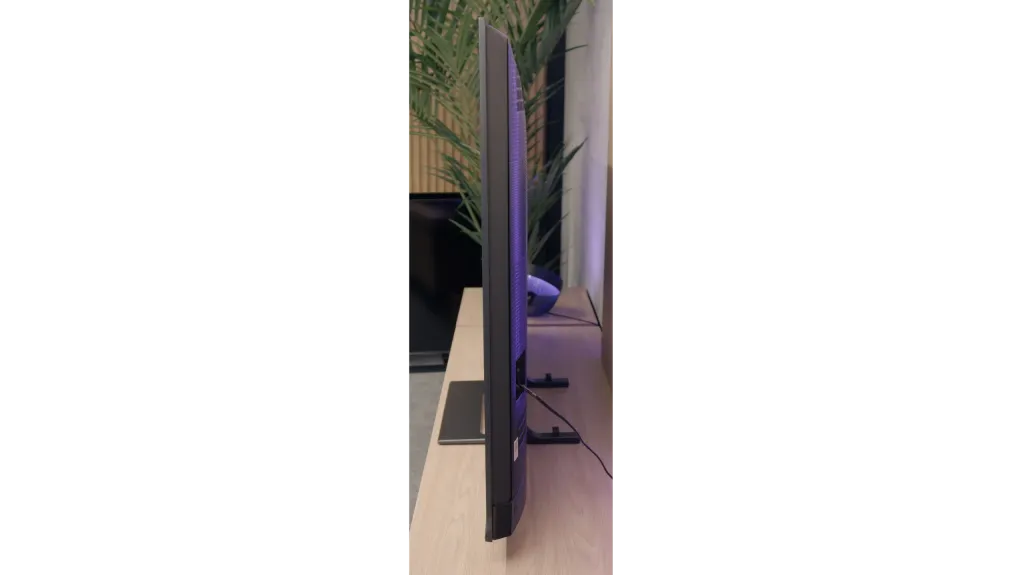




Contrast and black detail
8.6/10
10/10
Local dimming function: Yes, number of zones: 2048 (32 x 64)
Contrast:

Result
1,024,000:1

Result
140,000:1

Result
35,000:1

Result
22,350:1

Result
22,300:1

Result
∞:1

Result
∞:1

Result
∞:1

Result
∞:1

Result
∞:1
Halo effect and black detail visibility:
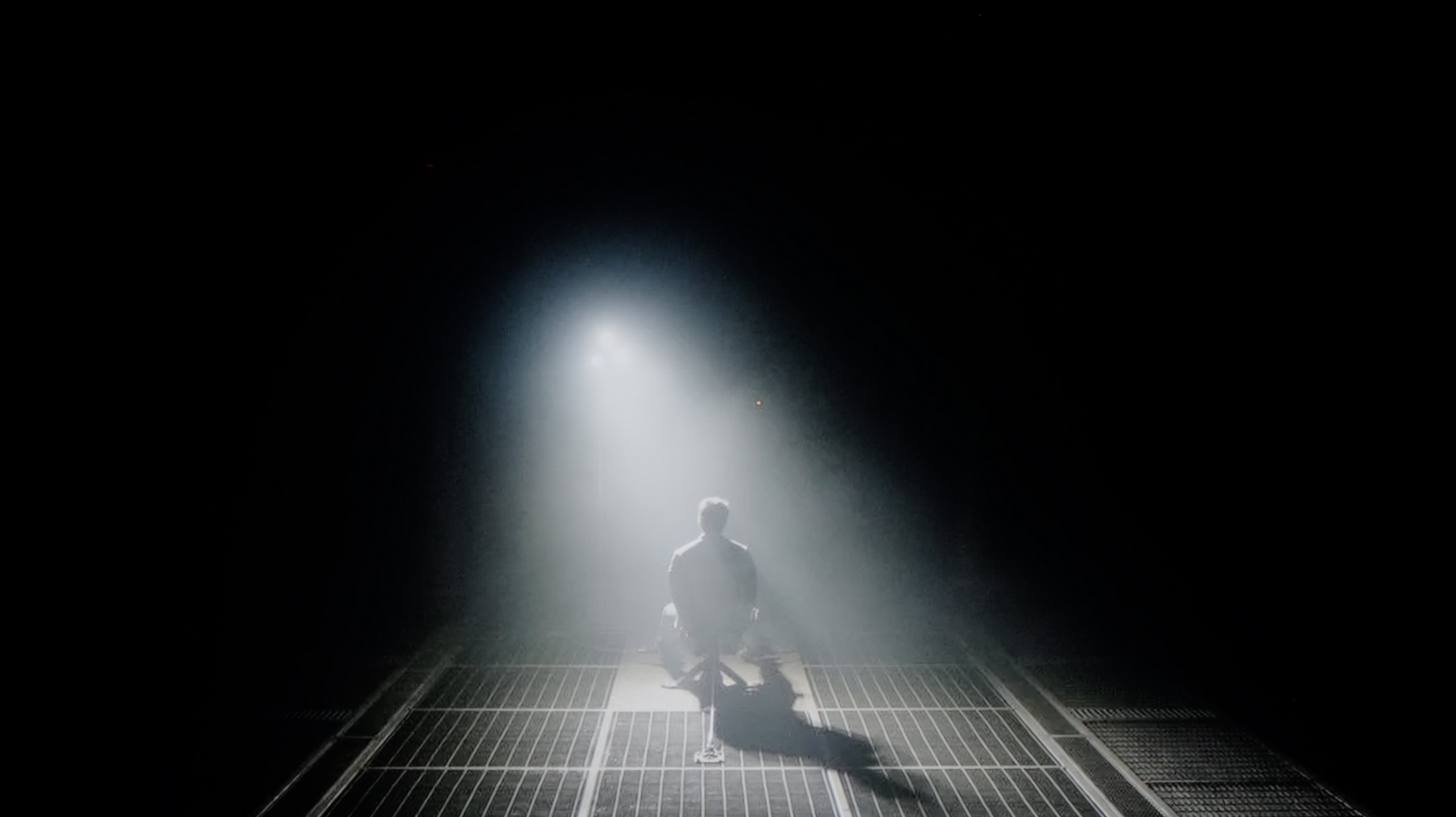

The unit we tested, the Hisense U8Q in size 65 inches, is equipped with a VA panel that, in itself, offers a high native contrast. However, that is not the greatest strength of this model – the key lies in the Mini LED backlighting. Thanks to the use of thousands of dimming zones and a really well-developed light management algorithm, the contrast in the U8Q can be described as excellent, especially for a TV of this technology.
The best results reach a level of about one million to one – a result that is commendable and places the U8Q among the top Mini LED TVs. Yes, there are some hiccups and even drops in contrast, but they are not as dramatic as in many other models of this class that we have tested on our portal. It's also worth remembering that like every Mini LED TV, the U8Q is not completely free from typical imperfections – sometimes the image may be dimmed too much or there might be slight overexposure with a halo effect. Nevertheless, this does not change the overall impression: the contrast in the Hisense U8Q makes a striking impression and is one of the model's greatest advantages.
Contrast and black are the domain of OLEDs, and the Philips OLED820 is no exception. The WOLED panel from LG Display works the same as in the LG C5 models or the Samsung S90F, providing exactly what we expect – perfect black and infinite contrast. Whether we are watching challenging scenes full of fine details or simpler frames flooded with uniform black, the television always performs excellently. It separates light from darkness with surgical precision, creating an extraordinary sense of depth in the image. And while different technologies can be debated, in this category, OLED simply reigns, and the Philips OLED820 only confirms this rule.
HDR effect quality
7.6/10
7.5/10
Luminance measurements in HDR:

Result
2195 nit

Result
725 nit

Result
1652 nit

Result
485 nit

Result
1541 nit

Result
1035 nit

Result
1235 nit

Result
1356 nit

Result
1315 nit

Result
521 nit
Scene from the movie “Pan” (about 2800 nits)


Scene from the movie “Billy Lynn” (about 1100 nits)


Static HDR10


Dynamic: Dolby Vision
Dynamic: Dolby Vision


HDR luminance chart:
Philips OLED820
HDR luminance
Luminance of RGB colors
Hisense U8Q
HDR luminance
When it comes to HDR, Hisense U8Q shows its claws. On paper, meaning in synthetic measurement tests, the television can "score" nearly 4000 nits of peak brightness. That's a value that most models can only envy. In practice, this translates to very strong lighting effects in films – in some scenes, we managed to measure a real 1500 to 2000 nits, which is a level usually reserved for the absolute top of televisions on the market.
Of course, it's not always that perfect. With small, pinpoint elements, brightness can drop – a good example is scene number 4 from the movie Sicario 2, where instead of thousands of nits, we get around 500. But it's worth noting that the effect doesn't vanish completely – the light is still visible, and the image doesn't feel artificially dimmed. This is a typical drawback of Mini LEDs, so it's hard to consider it a significant minus.
On the huge plus side, color reproduction deserves high praise. Thanks to additional coatings that improve color saturation, the U8Q nearly covers the full DCI-P3 color space (98%), and in the case of the wider BT.2020 gamut, it achieved a score of over 80%. This is an excellent result, making HDR films look juicy, vibrant, and simply very cinematic.
When it comes to HDR quality, the Philips OLED820 uses the same class of WOLED panel that we find in its biggest competitors – LG C5 or Samsung S90F. This means we can count on truly solid performance. This year, mid-range OLED panels are capable of exceeding the threshold of a thousand nits, and the model tested reaches around 1300 nits in some films. This is an outstanding result that allows for an extremely precise depiction of the director's vision, as contemporary productions are mastered in such brightness ranges. Of course, there are situations where even the OLED820 has to compromise. Full-screen scenes flooded with white, like those in the movie The Meg, can drop brightness to 400–500 nits, which clearly weakens the effect. This is a characteristic of OLED technology that has not yet been fully eliminated. Despite this limitation, it is hard not to appreciate the HDR in this model – high luminance and wide coverage of the DCI-P3 color gamut at 99% make the picture simply look great.
Factory color reproduction
7/10
6.7/10


Factory Mode
After calibration


Factory Mode
After calibration
We have to admit that when the U8Q arrived at our editorial office, we were slightly surprised… and positively so. Usually, televisions require immediate white balance correction – it can be too warm or too cold, which immediately leads to strange color errors. Meanwhile, here the situation looks really good right out of the box. Of course, we are talking about our unit, so there’s no guarantee that every model will be tuned as well, but in our case, the first impressions were very positive. The only more pronounced issue was related to how the television manages brightness. Looking at the EOTF chart, it is evident that the U8Q tends to brighten small elements on the screen. This, in turn, caused what we mentioned earlier – slight overexposures and the impression that the entire scene can sometimes be a bit too bright. However, this is not a flaw that undermines the image, rather it is a characteristic effect of this model.
The color reproduction in the factory settings really surprised us, and positively so. The Philips OLED820, switched to Filmmaker mode, immediately showed that it was quite well tuned in terms of color. The white balance was relatively accurate, though with a slight lack in the blue hue, which sometimes gave the image a slightly yellowish tint. However, this is not a flaw that particularly interferes with everyday viewing. A larger problem arose with the brightness characteristic. The gamma chart clearly deviated from the ideal, with the line being below the expected values, causing the image to be overly brightened, and the colors looked as if they were covered with a light milky filter. This effect was also noticeable in tests using the Colour Checker pattern, where more pronounced errors appeared.
Color reproduction after calibration
8/10
9.3/10




Of course, we wouldn't be ourselves if we didn't make adjustments to the white balance. After calibration, we managed to align the SDR signal to near perfection – older movies, YouTube content, and classic television looked almost perfect on the U8Q. This is truly an outstanding level that shows this model can do a lot if given a little help. Unfortunately, the situation is different with HDR content. The colors themselves aren't a major issue, but the biggest flaw of the U8Q remains the EOTF brightness characteristics. In practice, the TV tends to "blow out" beyond how the image should look in its original form. It's that slight "blown out" effect we saw earlier in comparisons with the best screens on the market. It's a bit of a shame that this characteristic can't be fully tamed – if we could maintain similarly good control over brightness in HDR as we do in SDR, we would have an absolutely reference-quality image.
After calibration, both the Filmmaker mode and the game mode gained quite a lot. A slight adjustment of the white balance and an improvement in brightness characteristics resulted in excellent outcomes for SDR content – the image looked almost perfect, natural and very close to the reference. In the case of HDR materials, the situation was similar; the colors looked stunning and it was hard to find anything to criticize. However, we noticed a certain feature that we had already pointed out when comparing scenes from the movie Billy Lynn. An analysis of the EOTF curve revealed that the television has a slight tendency to dim details in the blacks, which means that the darkest sections are not always displayed exactly as the director intended. Nevertheless, the effect after calibration is remarkable, and the OLED820 stands out as one of the more interesting screens in its class. It just needs a little bit of fine-tuning, and there's really nothing to be afraid of.
Smoothness of tonal transitions
8.9/10
6.5/10












When it comes to the fluidity of tonal transitions, the Hisense U8Q really impressed us. Even in the darkest scenes, where usually other TVs show unsightly bands and ugly transitions, here the picture remains smooth and consistent. Nothing layers up, there’s no “stepping” effect – everything looks as it should. Similarly in brighter shots – it’s also very good. Sure, if we were looking through a magnifying glass, we might find some minor flaw, but in normal viewing, it’s hard to nitpick. Overall, it looks very, very good!
The fluidity of tonal transitions is unfortunately the Achilles' heel of the Philips OLED820. During tests, we noticed slight issues with color blending – both in bright and darker scenes, one can see characteristic banding, which detracts from the naturalness of the image. It must be admitted that compared to last year's OLED 819 model, there is a significant improvement, but nonetheless, the competition performs better in this category.
Image scaling and smoothness of tonal transitions
8/10
7/10
Smooth transition function
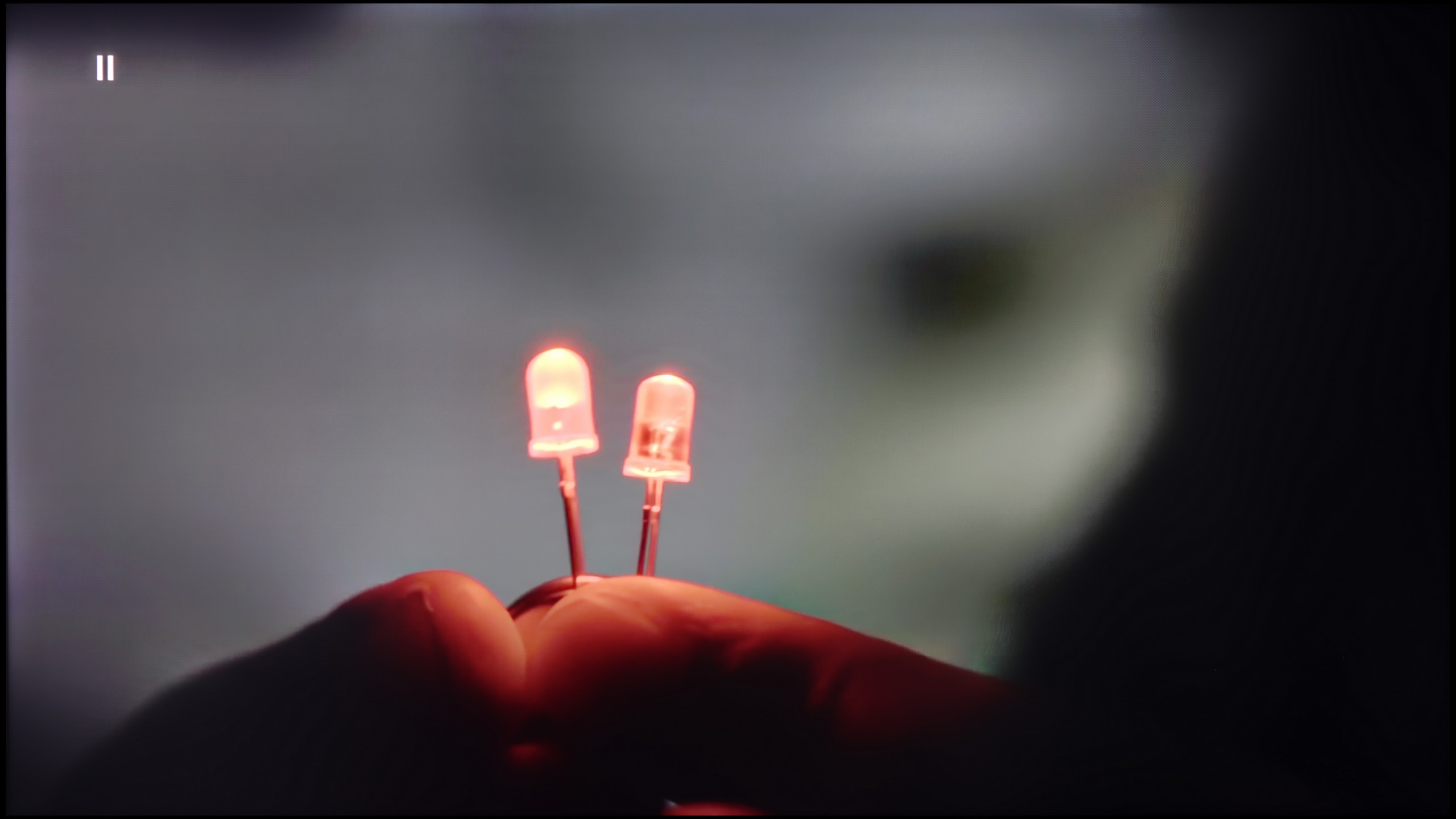

Image without overscan on the SD signal


The Hisense U8Q handles lower-quality materials quite well. The TV can smooth out tonal transitions thanks to the "Smooth and Gradient Picture" feature – it works best when set to Medium. At that setting, it nicely reduces unwanted bands and unevenness in the image, but importantly, it does not remove cinematic grain or fine details.
The upscaling itself is also at a good level. Images from lower resolutions look smooth and soft, at times even a bit too much – we get a plastic effect that may not appeal to everyone. Fortunately, this can be easily adjusted with the sharpness slider to fit personal preferences.
Fortunately, the earlier effects of the aforementioned posterization can be quite effectively mitigated. The "distortion reduction" feature set to medium handles unwanted color banding, improving the smoothness of tonal transitions. It does happen, however, that it works a bit too aggressively and smooths out some details – such as minor skin imperfections of the actors – but despite this, it can be considered worth using without major compromises. The upscaling in the OLED820 also performs well. The test image with the model is exceptionally soft, sometimes even too much so, although this can be alleviated by slightly increasing the sharpness in the picture menu – it’s a matter of personal preference. The lack of overscan issues with very low-resolution content is also commendable, meaning we don't have to worry that the image will be unnecessarily cropped.
Blur and motion smoothness
7.8/10
8.5/10
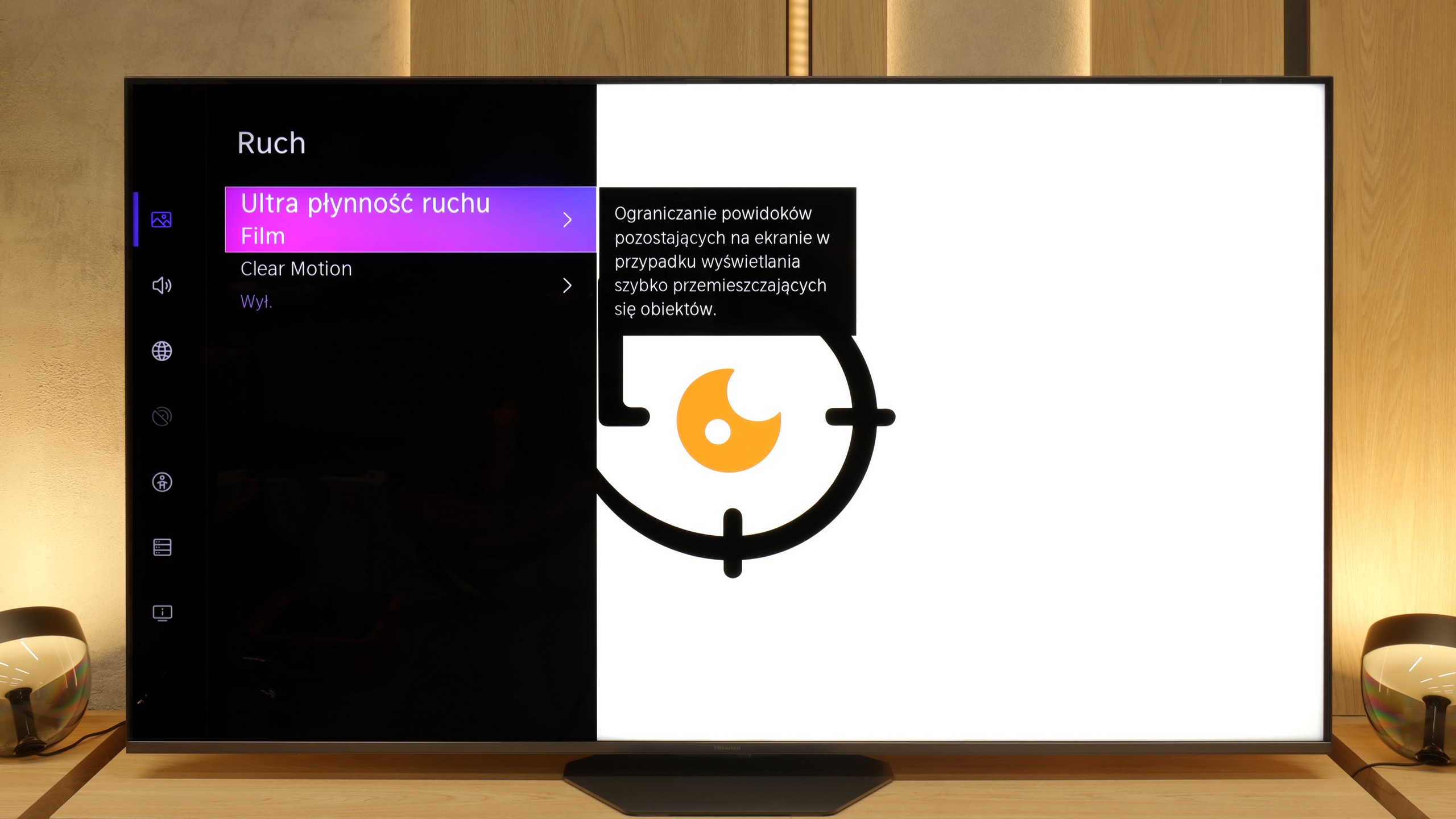

Blur (native resolution, maximum refresh rate):
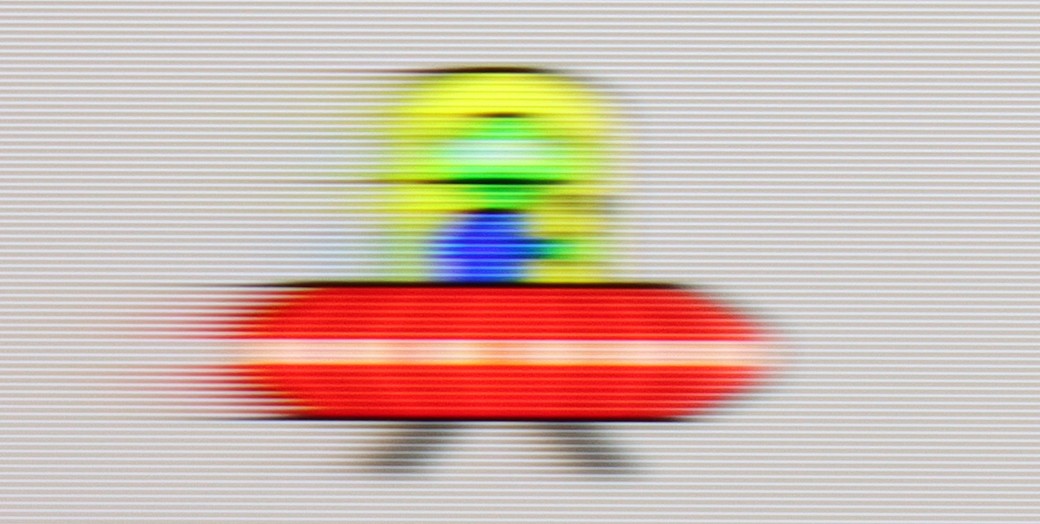
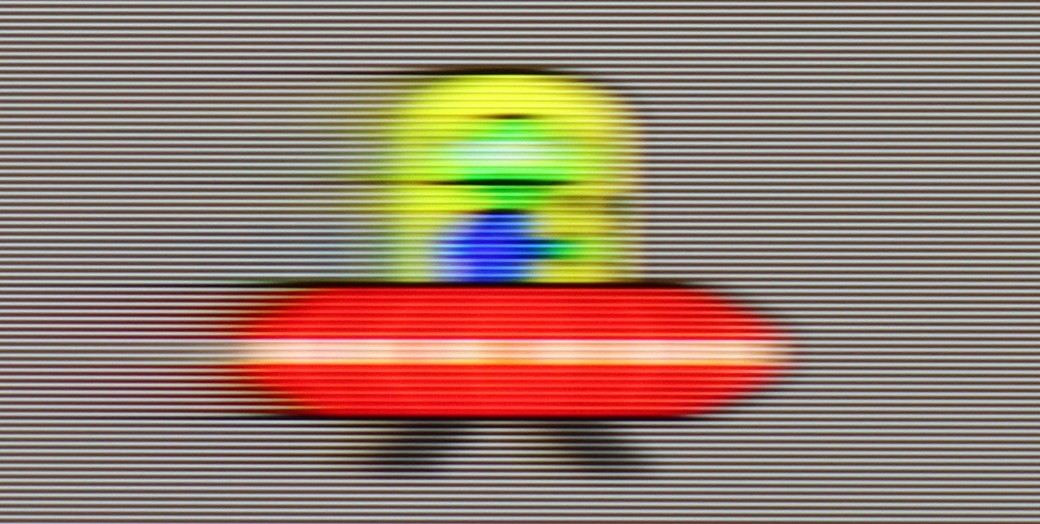
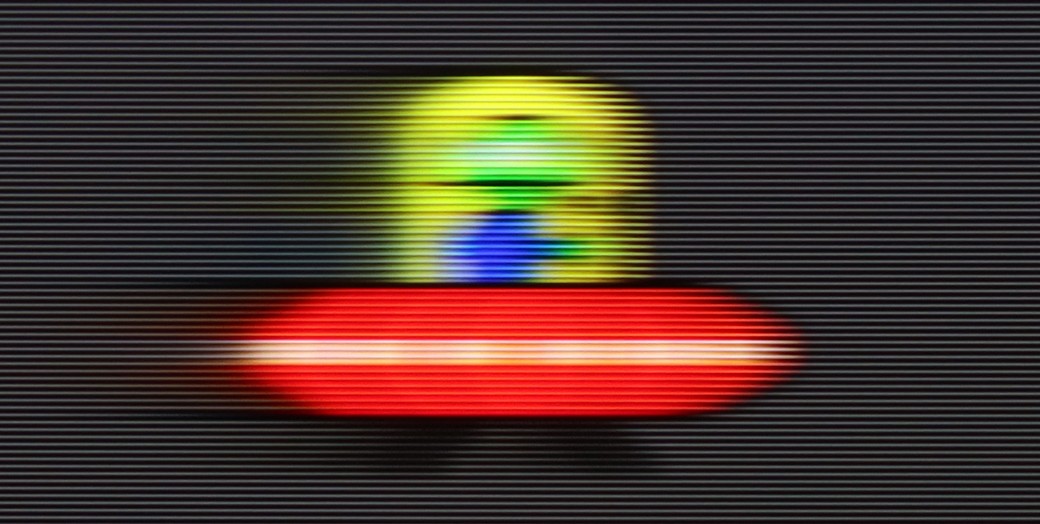



Blur (BFI function enabled):



Smużenie (1080p@288Hz):

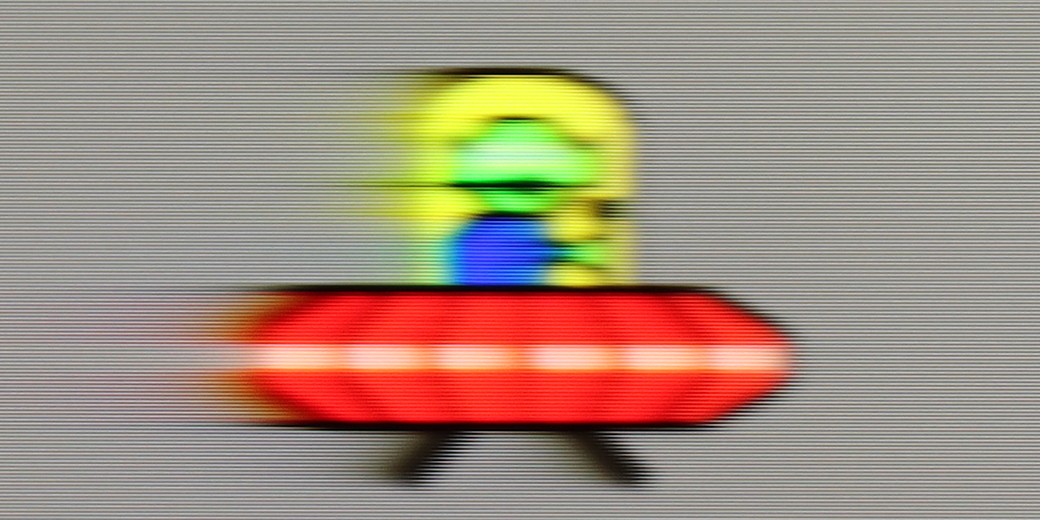

Smużenie (4K@144Hz):



Hisense U8Q has a display that can refresh the image up to 165 Hz in 4K resolution. In practice, this will mainly be utilized by PC gamers, but as they say – it’s better to have it than not 😊. For movies and series, we have a built-in smoothness enhancer called Ultra Smooth Motion. In the settings, it can be easily adjusted to personal preferences – whether we want more of a "cinematic" frame rate or a smooth, theatrical spectacle.
Motion fluidity is an area where OLEDs always shine, and the Philips OLED820 confirms this rule. The panel itself offers a refresh rate of 144 Hz, which will mainly benefit PC gamers, but even with standard television sources or consoles, where 120 Hz is used, the motion is fast, sharp, and simultaneously smooth, without traces of ghosting. This is thanks to the outstanding response time between pixels, which ensures the image retains clarity in every dynamic scene. The manufacturer has also added its own smoothing feature called "Motion Style." In the menu, we find two sliders – the first, responsible for fluidity, allows us to adjust the amount of artificially added frames in movies. This way, we can choose a raw, cinematic character with a clearly visible film frame or a more theatrical image with smooth motion. The second slider is for reducing blurring, especially useful in sports broadcasts. Here, we definitely recommend setting it to the maximum value, as the effect is truly excellent.
Console compatibility and gaming features
8.5/10
9.8/10
- ALLM
- VRR
- VRR range48 - 288Hz48 - 144Hz
- Dolby Vision Game Mode
- Correct implementation of HGIG
- 1080p@120Hz
- 1440p@120Hz
- 4K@120Hz
- Game bar
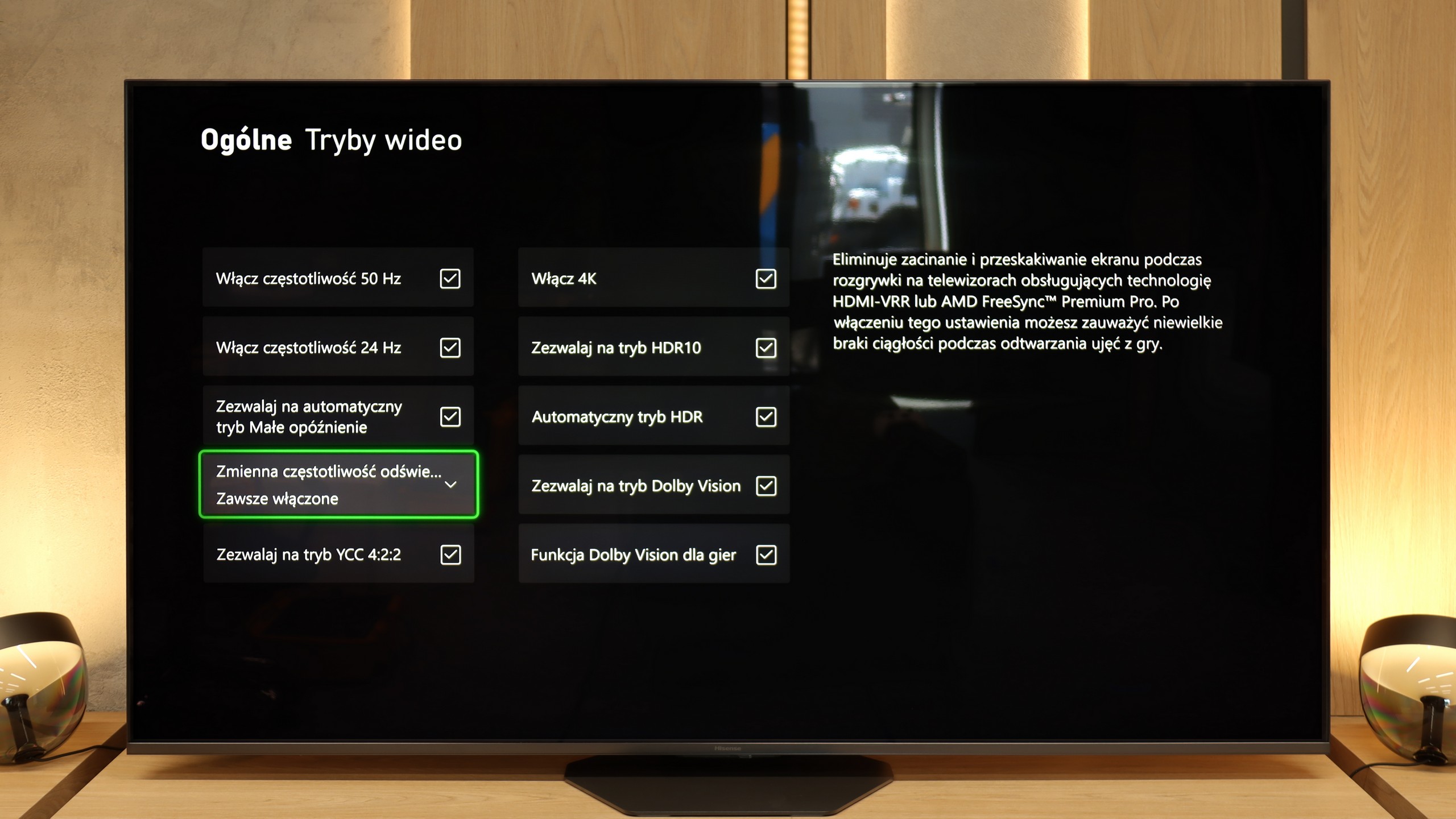

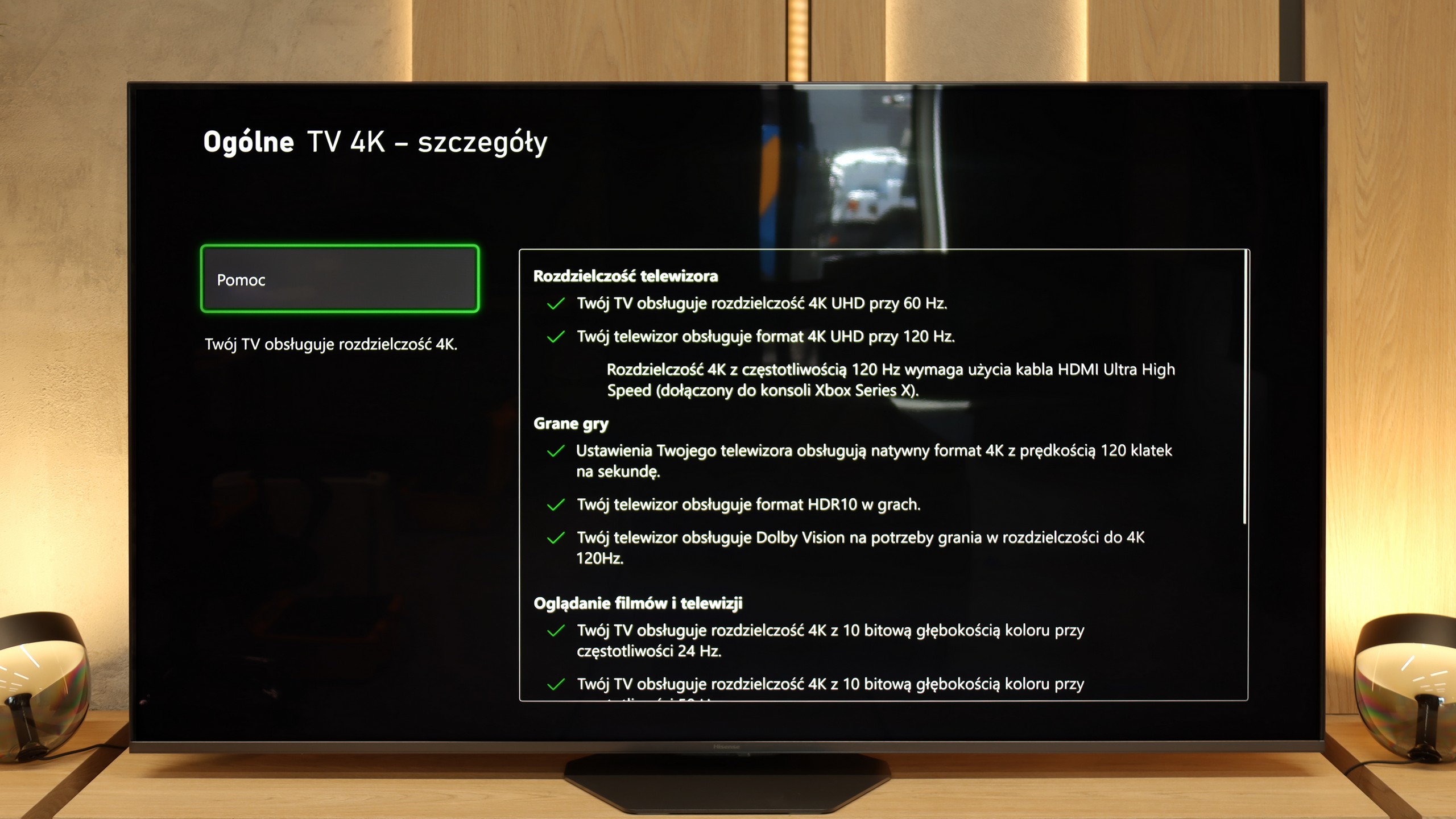

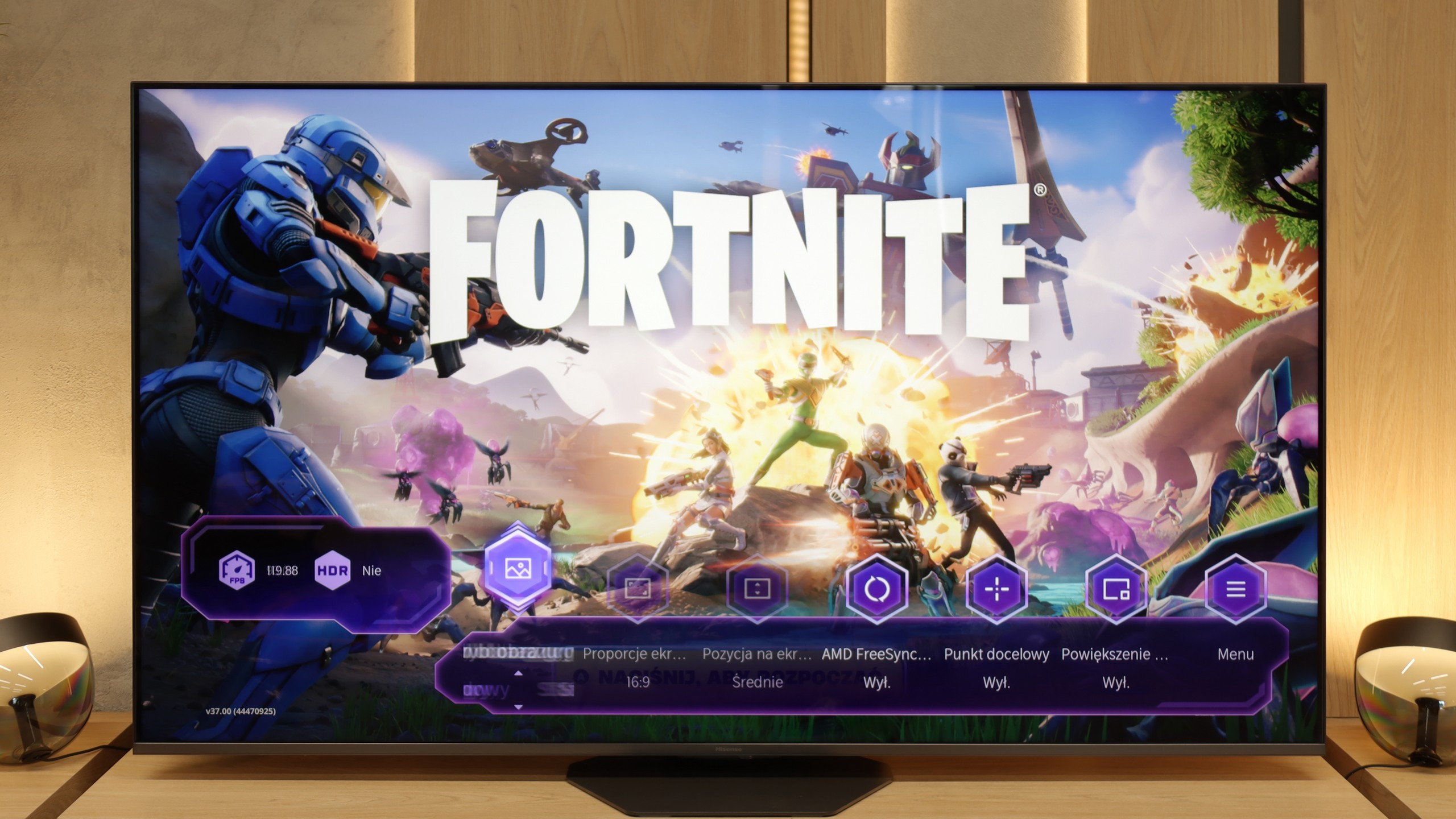

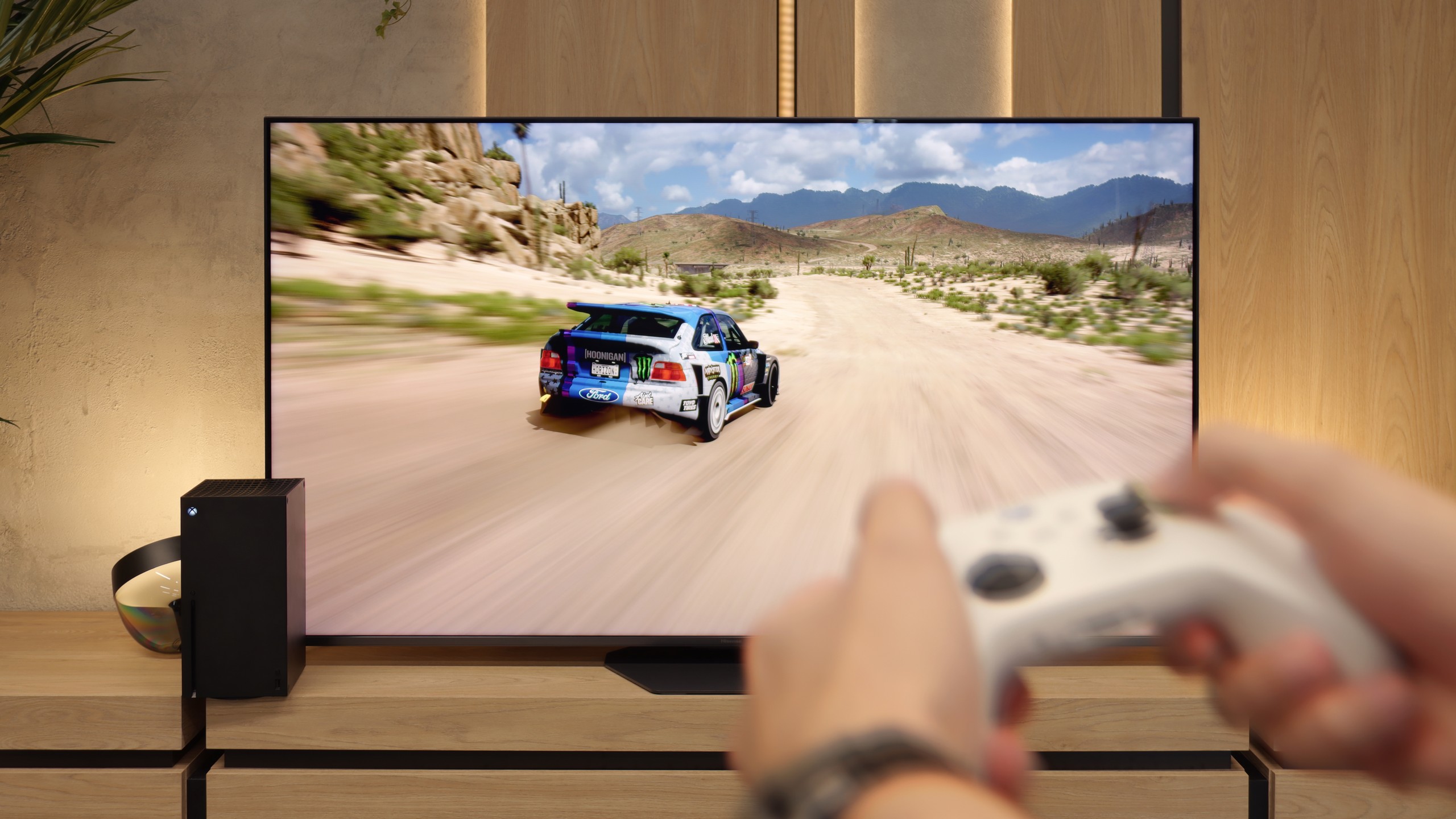

In terms of features, the Hisense U8Q has practically everything one could expect from a modern gaming television. Thanks to the new processor, the manufacturer has managed to implement as many as three HDMI 2.1 ports, so there is no problem connecting multiple consoles or a computer. In addition, it includes all the key technologies – Game Bar with parameter monitoring, variable refresh rate (VRR), automatic low latency mode (ALLM)... in short, a complete set.
But as is often the case with Hisense, it falls a bit short of perfection. The biggest drawback remains the lack of support for the HGiG format, which allows you to adjust the television's brightness to the console and get the most out of HDR in games. It's a shame because if this feature were included, we would have a device practically made for gamers. As it stands, the U8Q remains "just" a very good choice 😉
Philips OLED820 is one of the most complete televisions for gamers. It practically has everything you could expect: two HDMI 2.1 ports with full bandwidth of 48 Gbps (too bad there aren't four), variable refresh rate VRR, automatic game mode ALLM, support for Dolby Vision in games, and a good implementation of the HGiG mode. The television also handles lower resolutions at 120 Hz without any issues, so you can count on great flexibility when choosing different picture modes on the console. Philips also adds Game Bar – a panel that allows you to change picture modes, add a crosshair, or view parameters. Although it looks quite clunky and is less polished than that of the competition, it serves its purpose. In practice, therefore, the OLED820, besides having a full set of four HDMI 2.1 ports, offers almost everything a gamer might need.
Input lag
9.8/10
10/10
SDR
HDR
Dolby Vision
The Hisense U8Q really performs well in terms of signal delay. In 120 Hz mode, the input lag is around 10 ms, and for 60 Hz content, it hovers around 18 ms. These values place it among the fast TVs, and in practice, it's hard to have any major objections. The response is instantaneous, and controlling a character or a car on the screen happens without noticeable delays. Whether someone is playing dynamic shooters or more relaxed narrative titles, the U8Q will perform excellently.
The input lag in the Philips OLED820 is truly at a reference level. The measurement showed values below 5 ms, which places it at the very top of the TVs available on the market. Even the Dolby Vision mode does not cause problems in this regard, which is quite a rare phenomenon. In practice, this means lightning-fast responses to every movement, no noticeable delays, and full comfort in dynamic games. In short, outstanding results that will please even the most demanding gamers.
Compatibility with PC
8.4/10
6.5/10
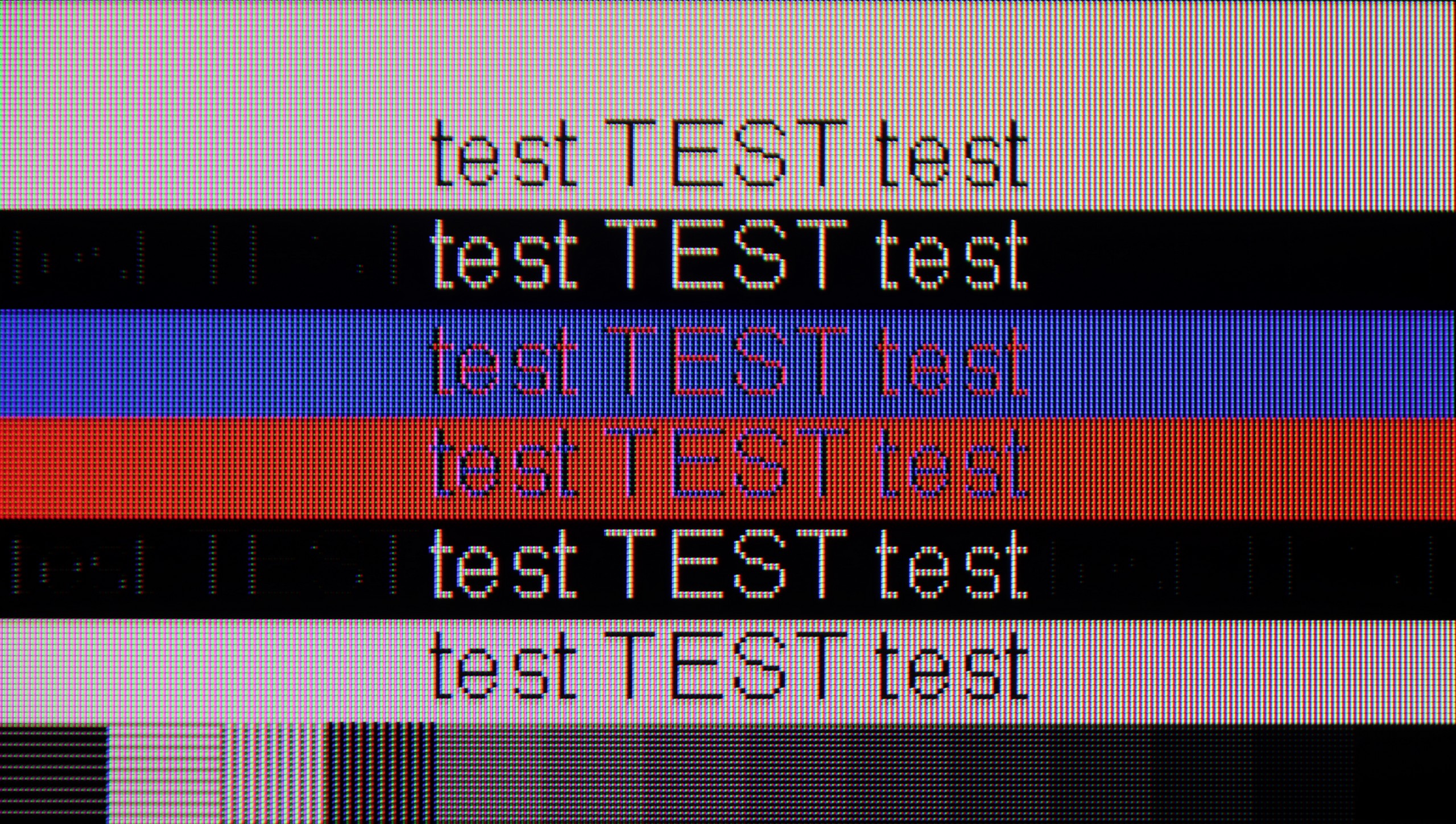

As we mentioned regarding the features for gamers – Hisense U8Q also communicates well with computers. The 4K panel with a refresh rate of 165 Hz is impressive on its own, and at Full HD resolution, it can even boost to 288 Hz. This is great news for e-sports fans, where speed of reaction matters most, rather than the highest image quality. Additionally, it supports G-Sync and FreeSync, so gameplay is smooth, without stutters and annoying frame tearing.
A pleasant surprise is the presence of a USB-C port with DisplayPort functionality for laptops or even phones. This is a true novelty in televisions, and it's quite possible that Hisense will be a pioneer here, setting the direction for the competition.
When it comes to working with text, we must mention one small inconvenience. Although the U8Q correctly handles chroma 4:4:4, it has issues displaying very thin, horizontal fonts. This means that some subtitles or interface elements may be hard to read. Probably no one buys this model with office work in mind, but if someone were to have such a plan – it’s worth keeping this in mind.
Collaboration with a PC for the Philips OLED820 varies depending on the application. For gaming, it performs exceptionally well: a high refresh rate of 144 Hz combined with G-Sync support provides smoothness and responsiveness that other televisions would envy. The situation is less favorable when it comes to text work. The lack of proper implementation of chroma 4:4:4 causes fonts on colored backgrounds to be slightly blurred, which significantly lowers work comfort. Therefore, it's hard to recommend the OLED820 as a screen for office work with text or numbers. It's a pity that the manufacturer didn't learn from last year's models and this flaw continues to persist.
Viewing angles
3.2/10
7.6/10
In terms of viewing angles, the Hisense U8Q performs average – typical for a VA panel. It's a classic compromise: in exchange for much better black levels and contrast than with IPS panels, we have to accept that viewing from a larger angle doesn't look as good anymore. Colors begin to lose intensity, and the image gets slightly brighter. For a viewer sitting directly in front of the television – it's a dream. For someone who sits more to the side – not quite as much.
The viewing angles on the Philips OLED820 are another advantage that should delight you. OLEDs have always been characterized by nearly perfect angles, so no matter where we look from, the image remains clear and readable. Indeed, the classic WOLED matrix does not match technologies like MLA OLED or QD-OLED, but it's still hard to criticize anything here. The angles are simply excellent.
TV efficiency during daytime
8.2/10
5.7/10
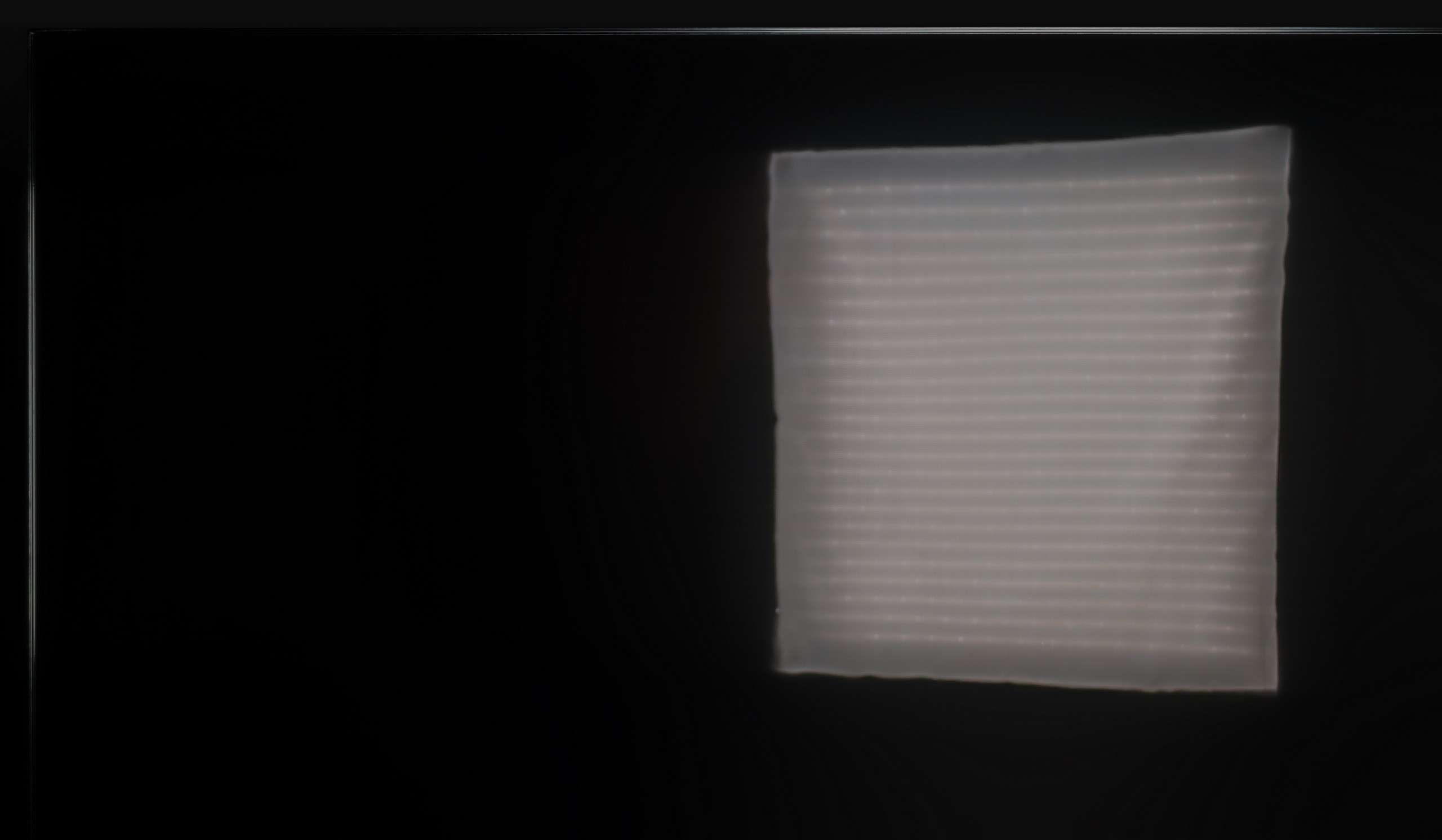



Matrix brightness
Average luminance SDR
Philips OLED820: 345 cd/m2
Hisense U8Q: 914 cd/m2
Hisense has opted for a new anti-reflective coating here called Anti-Reflection PRO. It is designed to improve viewing comfort in difficult lighting conditions – and it actually does the job. Reflections do not disappear completely, but they are well controlled and do not interfere with everyday viewing. However, the highlight of the program is the brightness in SDR – around 1000 nits! This is a result that would make top super premium models proud. As a result, the U8Q performs excellently in sunlit rooms and can confidently be considered one of the better TVs for daytime viewing.
Details about the matrix
Subpixel Structure:
Panel uniformity and thermal imaging:
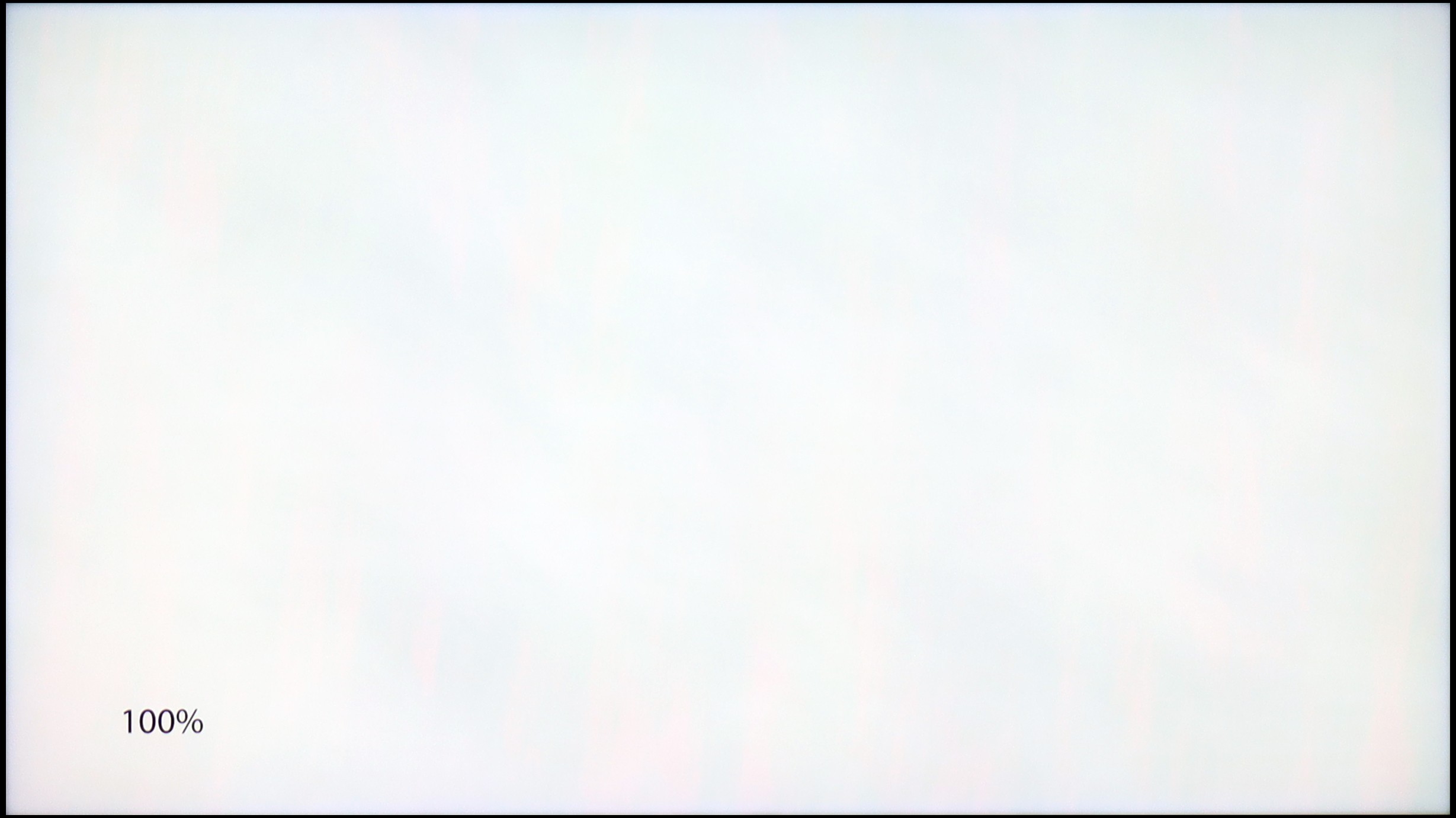

TV features
9.4/10
6.8/10
- HDMI inputs0 x HDMI 2.0, 3 x HDMI 2.1 48Gbps2 x HDMI 2.0, 2 x HDMI 2.1 48Gbps
- Other inputsToslink (Optical audio), RCA (Chinch)
- OutputseARC (HDMI), ARC (HDMI), Mini-Jack (Headphones)Toslink (Optical audio), eARC (HDMI), ARC (HDMI), Mini-Jack (Headphones)
- Network InterfacesWi-Fi 2.4GHz, Wi-Fi 5GHz, Ethernet (LAN) 100MbpsWi-Fi 2.4GHz, Wi-Fi 5GHz, Ethernet (LAN) 100Mbps
- TV receptionDVB-T, DVB-T2, DVB-S, DVB-S2, DVB-CDVB-T, DVB-T2, DVB-S, DVB-S2, DVB-C
Classic features:
- Recording to USB (terrestrial TV)
- Recording programming
- Picture in Picture (PiP)
- RF remote control (no need to aim at the screen)
- Backlit remote control
- Teletext
- Audio only mode
- Bluetooth headphones support
- Simultaneous Bluetooth headphones & TV audio
Smart features:
- AirPlay
- Screen mirroring (Windows Miracast)
- Voice search
- Voice search in native language
- Ability to connect a keyboard and mouse
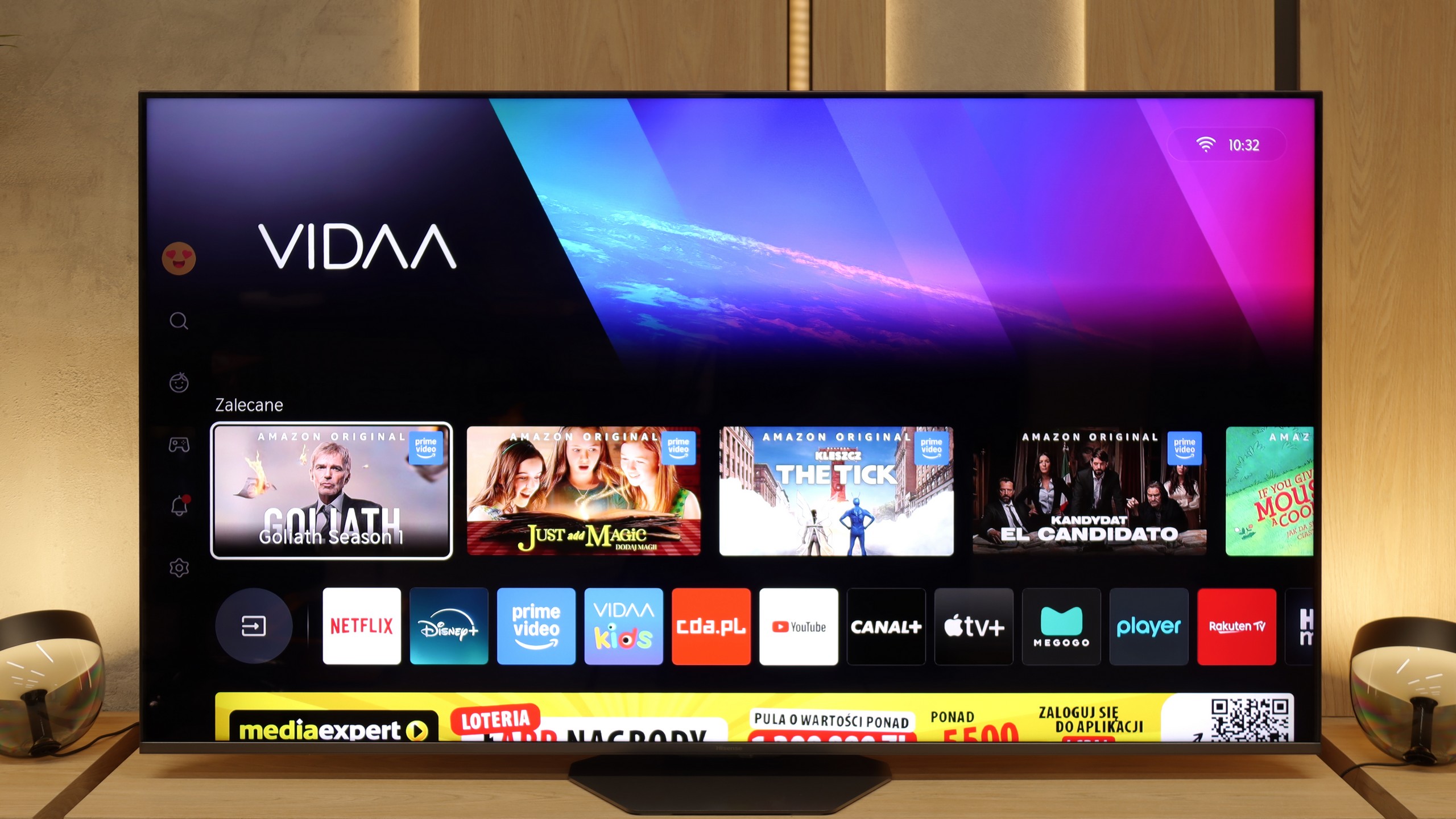
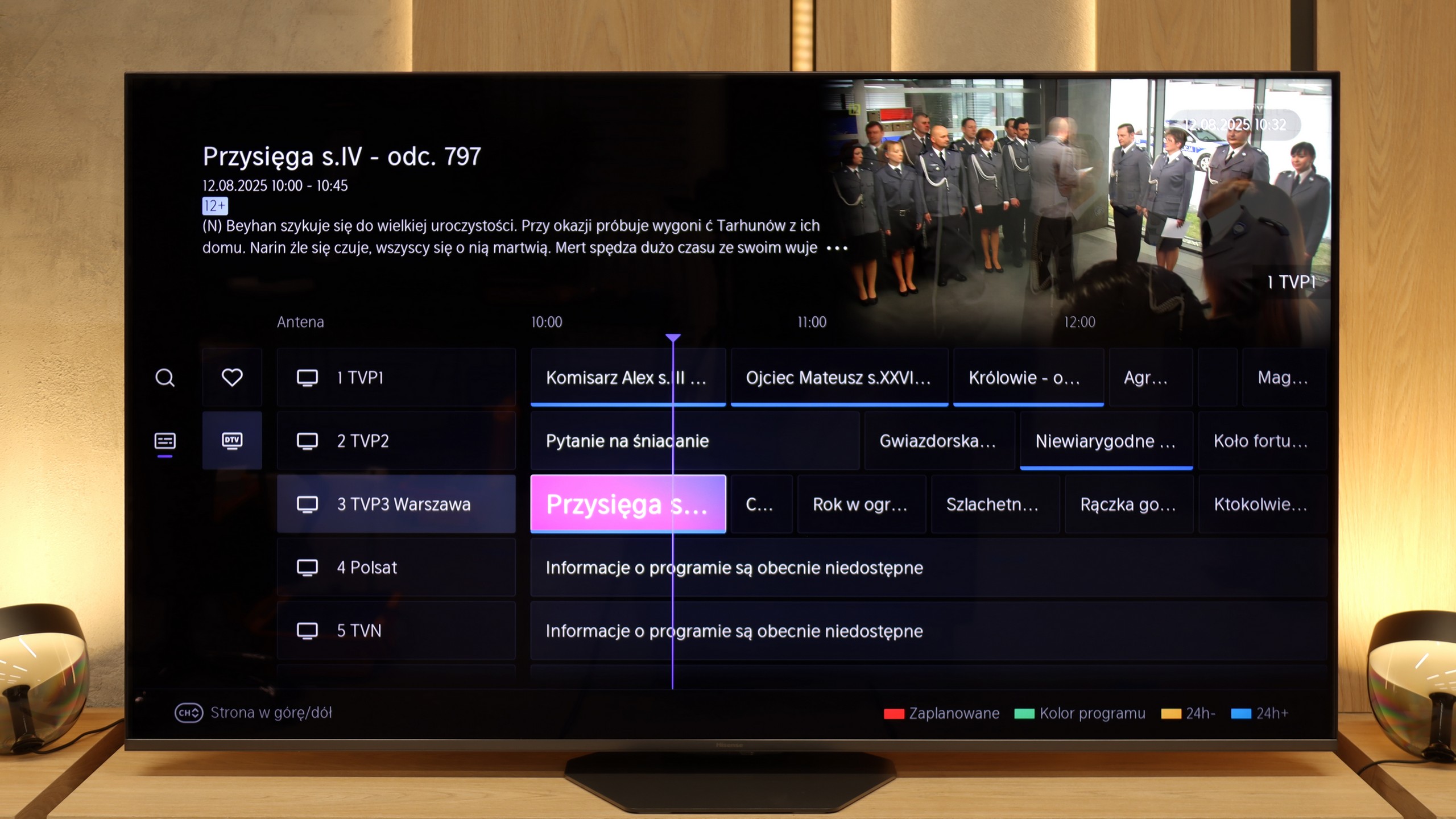
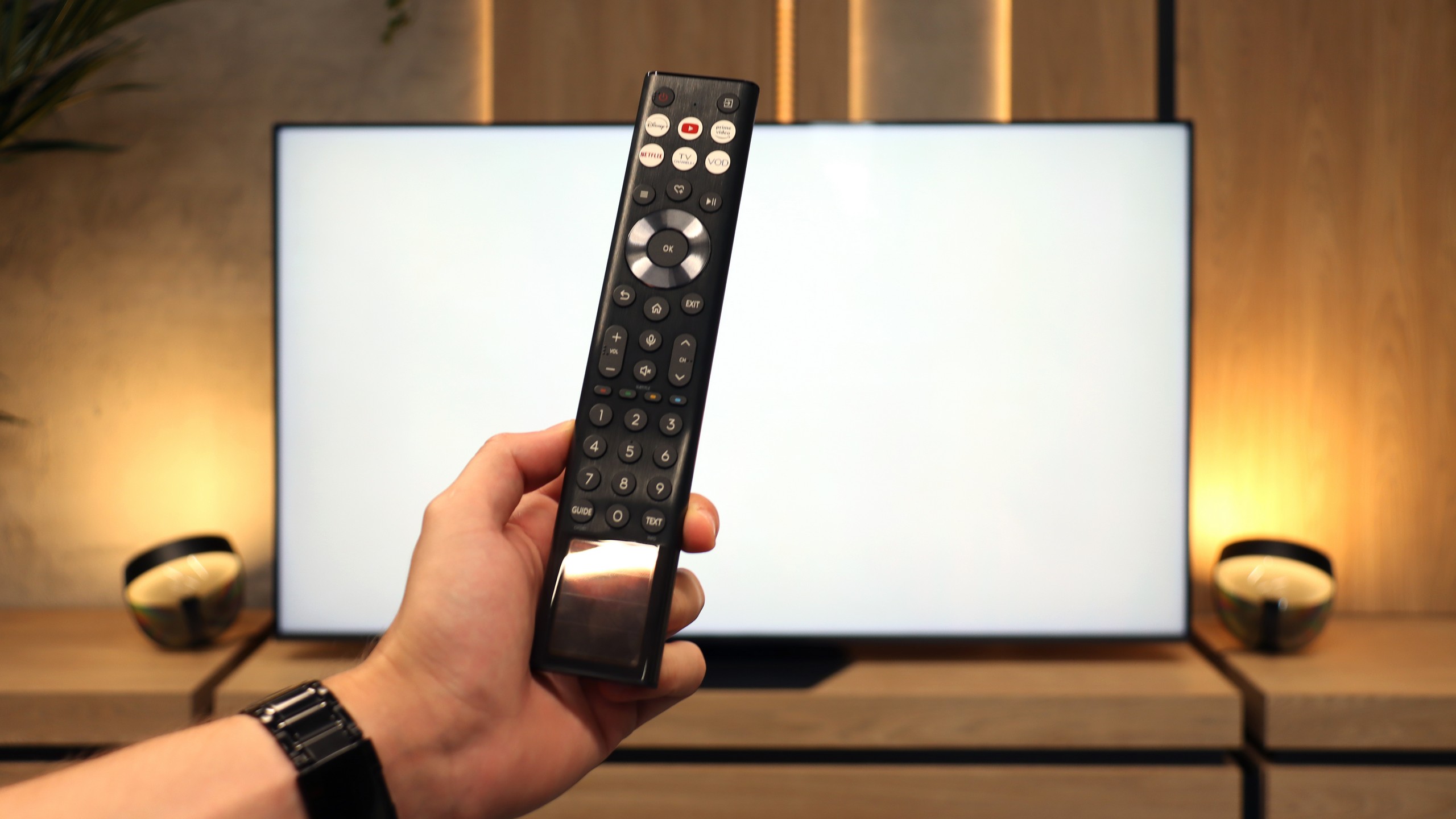
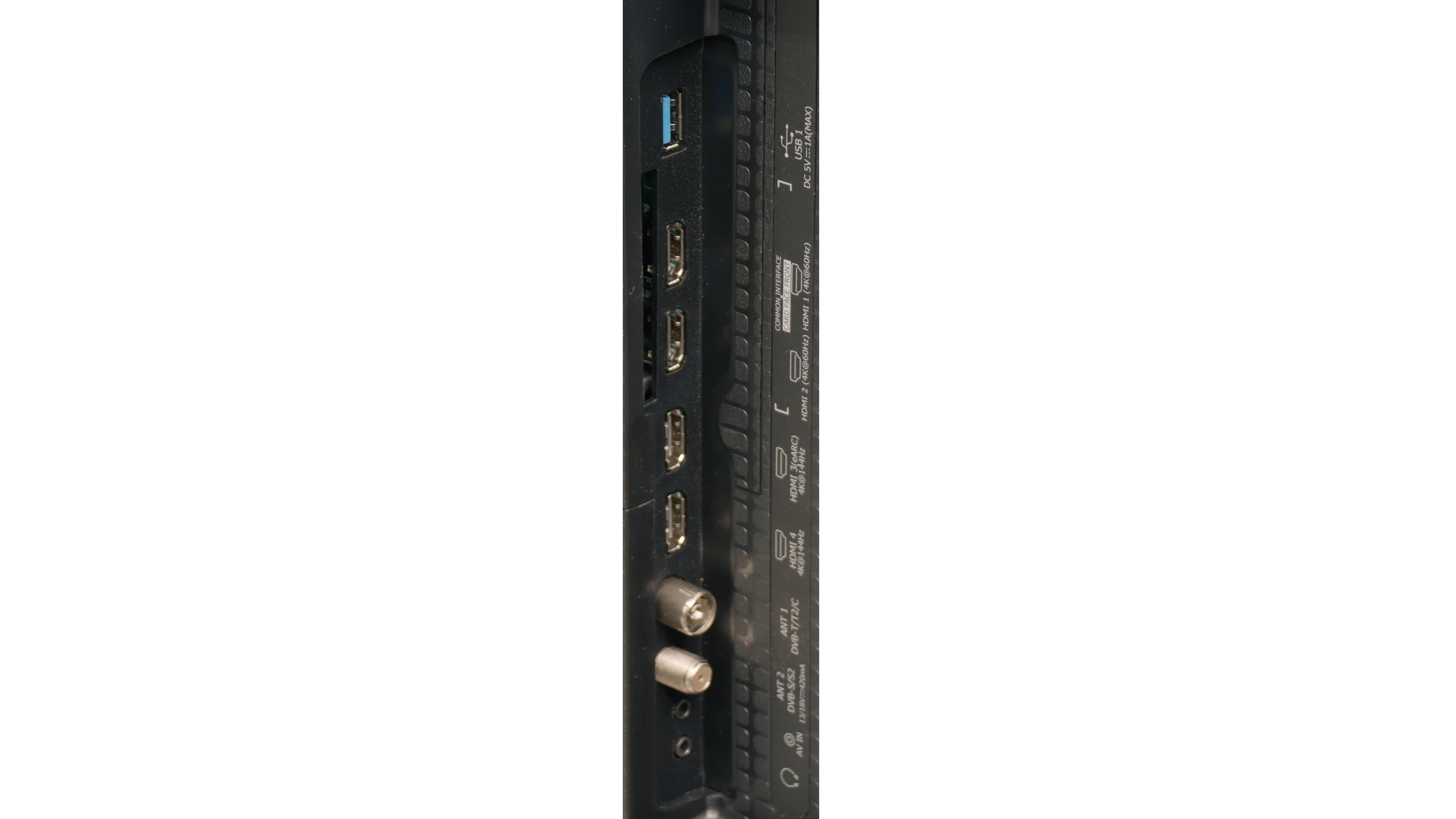




Classic Features
Hisense U8Q operates on the VIDAA system, which can still be called a newcomer in the European market, but it must be admitted – the manufacturer has a lot to offer here. We find classic features that are still useful for many people: USB recording, a clear EPG guide, and the ability to connect wired headphones, which especially seniors will appreciate. A nice addition is the presence of an audio jack – a connector that is slowly disappearing from TVs, and here it has been preserved.
USB-C in the TV!
A novelty in the U8Q is also the USB-C port with DisplayPort support. This is an unconventional but very practical solution – thanks to it, you can connect a laptop or phone with one cable, even if those devices do not have an HDMI output.
Smart Features: VIDAA
When it comes to smart features, VIDAA works smoothly. The interface is fast, applications open without significant delays, and network functions – such as screen mirroring and AirPlay – work very well. Of course, there are minor shortcomings, but these are more details than real problems. The Achilles' heel remains the somewhat limited application library. However, it is worth remembering that the list of available programs can change from day to day – some disappear, others appear, so the situation may improve.
GoogleTV on OLED820
Philips OLED820 runs on the Google TV system, which immediately places it among the televisions that truly offer freedom of use. It's a fantastic platform that needs no introduction – you'll find almost an endless number of apps, from popular VOD services to niche programs or games. Google TV also allows you to customize the home screen, tailoring content to your preferences, so the television actually "learns" your viewing style. A huge plus is also Google's voice assistant – quick, natural, and effective. It can understand even less obvious questions, and in practice, it works significantly better than many competitors. Unfortunately, there was a hiccup – the screen mirroring function simply didn’t work during testing. This can be considered a minor issue, but in 2025, things like this just shouldn't happen.
Classic Features of OLED820
When it comes to classic additions, the OLED820 doesn't strive for conservative notes. On one hand, we get a backlit remote control with a numeric keypad that is quite well organized and comfortable to use. On the other hand, you have to aim it at the screen because it operates on infrared, which is more reminiscent of equipment from a decade ago than a modern television. It also lacks a few features that are often found in competitors – there's no USB recording from tuners or a PiP mode. A nice touch among classic solutions is the mini jack analog input for headphones. This is a rarity today, and it can prove useful – whether for a senior with an additional headphone station or for someone who would like to connect older speakers.
AmbilightTV OLED820
You also can't overlook Ambilight, a feature that is a hallmark of Philips. This solution impacts not only the television's appearance but also the reception of content. The lighting system can be set in various ways, from a multicolored mode that dynamically follows the image to calmer, static backlighting. We definitely recommend the latter option because the gentle light behind the screen makes the viewed content combined with the OLED matrix look even deeper and more engaging. It's a simple yet very effective addition that has given Philips televisions character for years.
Playing files from USB
8.3/10
9.5/10
Supported photo formats:
Maximum photo resolution:
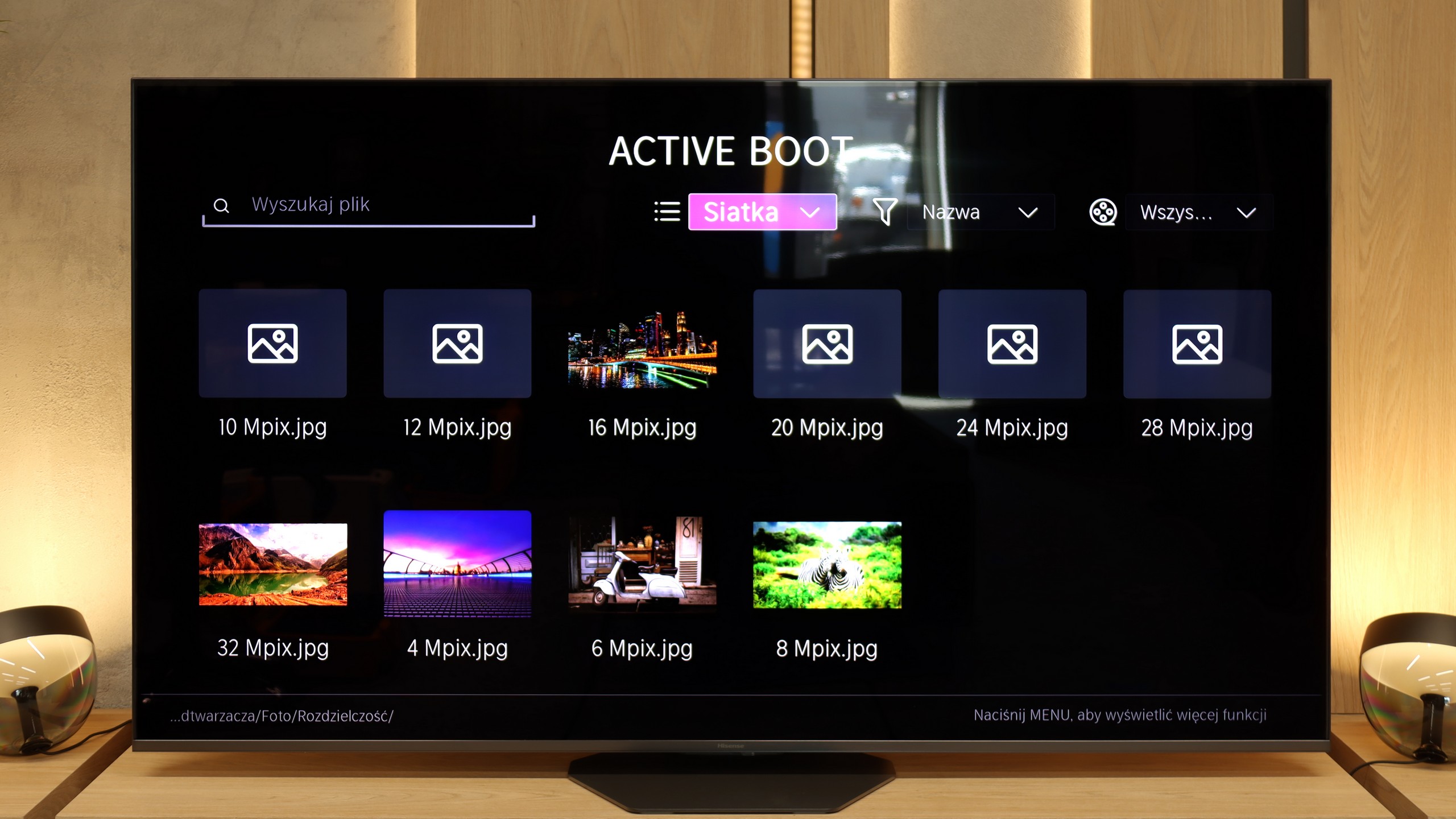

The built-in media player in the Hisense U8Q will be more than sufficient for most people. The TV opens popular video and audio formats and also handles photos. However, there is a small caveat – not all photo resolutions are supported. So, if we have photographs saved in a very large number of megapixels, they may simply not open. It’s worth keeping this in mind to avoid unpleasant surprises during the family photo presentation.
The Philips OLED820 has a built-in file player with USB, which at first glance looks quite clunky, but in practice, it works surprisingly well. One could even say that it is one of the best built-in players available in televisions. It handles virtually every type of file: photos, videos, or music, with minor exceptions, most of which are also not supported by the competition. And if someone still feels something is missing, there is always the option to install the VLC app from the Google Play library and the problem disappears.
Apps
7.7/10
9.6/10














































Sound
7.8/10
7.7/10
- Maximum volume88dB81dB
- Dolby Digital Plus 7.1
- Dolby True HD 7.1
- Dolby Atmos in Dolby Digital Plus (JOC)
- Dolby Atmos in Dolby True HD
- DTS:X in DTS-HD MA
- DTS-HD Master Audio
Hisense U8Q performs really well in terms of sound. The sound quality is pleasant, with a light bass and quite decent mid tones, making it sufficient for everyday watching of movies, series, or gaming. It gets a bit worse when we crank the volume up to 100%. This is a rather rare scenario, but it’s worth mentioning. With very strong bass, the rear speakers start working so intensely that the television can slightly "rattle," and the sound turns into an unpleasant, plastic echo. Therefore, it’s best to keep the volume within 70–80% – at that level, the U8Q sounds clear and pleasant, without any undesired effects.
The Philips OLED 820 features a built-in 4.1 speaker system with a total power of 70 W. At the back of the chassis, there is a subwoofer that provides quite solid and deep bass. The classic speakers responsible for the rest of the range are located at the bottom of the television, which means that the sound does not always propagate as we would like. However, the overall sound quality can be considered acceptable – series, television programs, or occasional music listening perform well, with slight bass support. This should be sufficient for daily use, although we still recommend purchasing even an inexpensive soundbar, which will significantly enhance the user experience.
Acoustic Measurements
88dBC (Max)
75dBC
81dBC (Max)
75dBC


